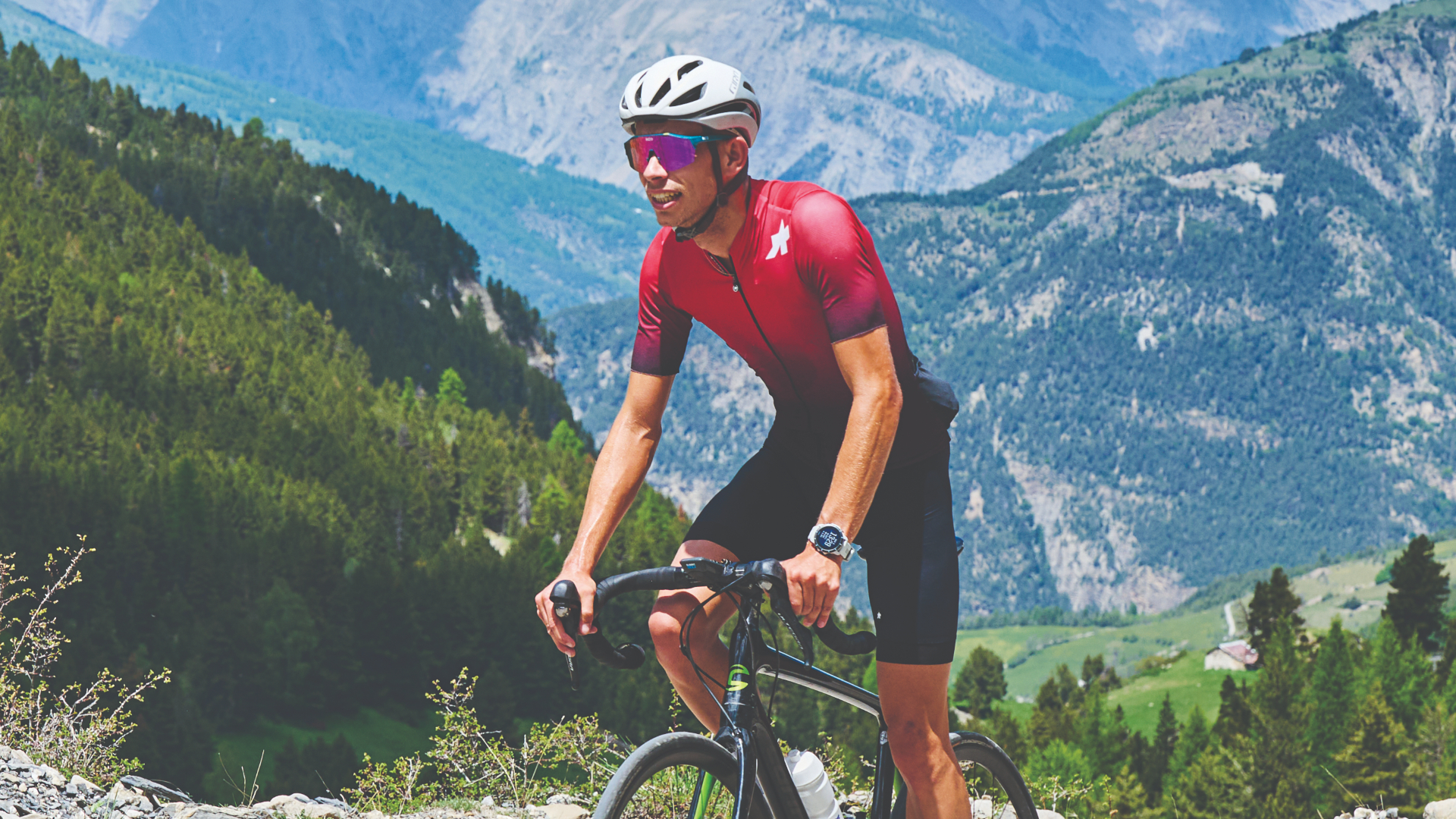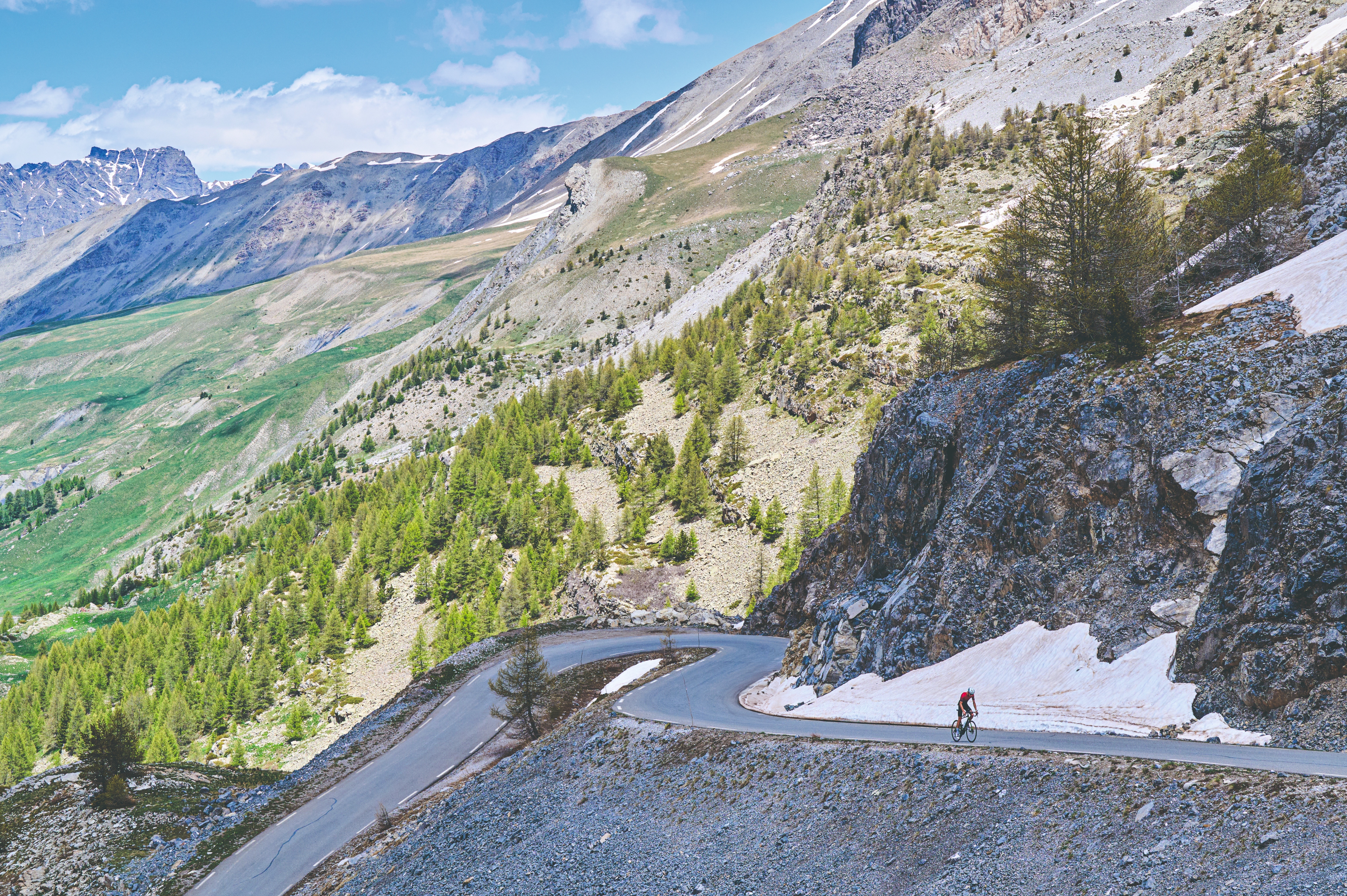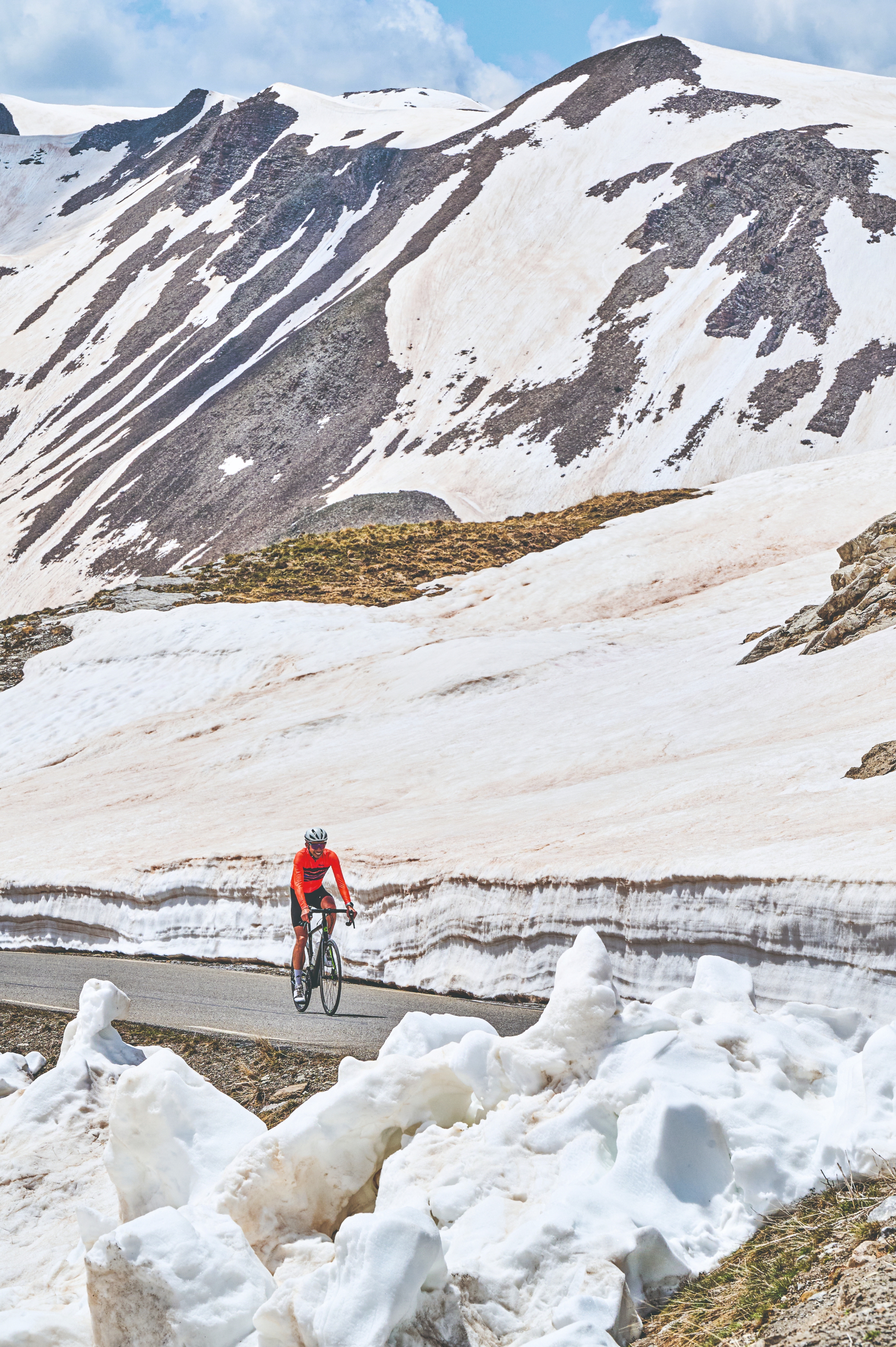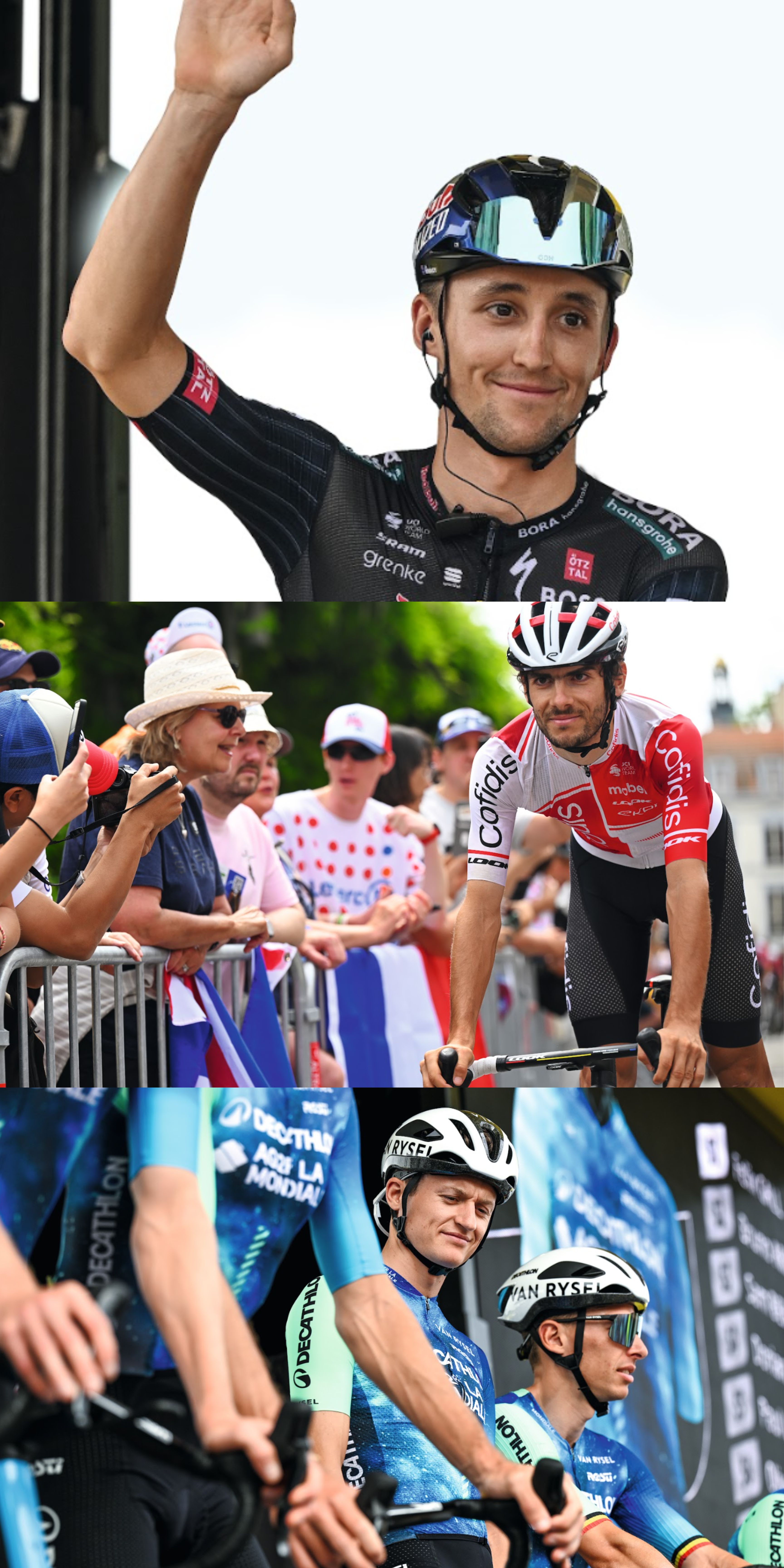
“When you’re racing on the Bonette, you don’t think it’s beautiful; you hate it. It’s terrible, really terrible,” says Bjarne Riis, the disputed ‘winner’ of the 1996 Tour. “If you want to admire the beauty, go there for a training ride and stop to enjoy the view. But in a race it’s tough – so very tough. It’s long, it’s at high altitude, and it’s up there with one of the hardest climbs in cycling.”
This year, on Friday's stage 19, the Tour de France is returning to the roof of the world: the Cime de la Bonette. The highest paved through-road in Europe – though not the highest road on the Continent, which is Spain’s Pico Veleta (3,398m) – the Tour will go up and over the 2,802m peak for only the fifth time, and just the second time this century. Sandwiched in between two further 2,000m-plus climbs, the Col de Vars and Isola 2000, it’s a queen stage befitting of its royal title.
To ride the Bonette as a col-bagging challenge as I did a few weeks before the Tour’s passing is to ride in silence through rarefied air shared only with a little vegetation, the odd marmot and eagle, while taking in a 360-degree panoramic view of snow-capped peaks, sheer rock walls and pristine Alpine lakes. But to race up and down the Bonette in the Tour de France is an entirely different proposition, with no time for marvelling at the splendour: “Because of the altitude, the Bonette is going to have a massive impact on the race,” predicts Pavel Sivakov, one of Tadej Pogačar’s key UAE-Team Emirates lieutenants. It’s the climb, and monstrous stage, that threatens to shift the battle for yellow on its head with only two days to go.

Three-headed beast
It’s early June when I take on stage 19, a 145km journey from Embrun to the ski resort of Isola 2000, which packs in more than 4,500m of climbing. The sun is shining high in the sky, the foliage has made its conversion from winter browns to summer greens, but the snow still stubbornly persists at the highest plains, receding slowly but surely, meltwater trickling down the passes and eroding cracks into the otherwise smooth asphalt.
The Col de Vars is the first climb on the menu, and it begins just 20km into the stage: with an average gradient of 5.7% for 18.8km, the Vars will act as a leg-warmer for the peloton. Its steeper slopes, in the early stages of the climb, will be a launchpad for those wanting to get in the day’s breakaway. When I ride up it, the road is deserted, col-baggers not yet having left their winter cocoon, save for one 81-year-old gentleman who jumps on my wheel as I pass him a kilometre from the top. “Sans vélo électrique,” he reassures me of his enduring strength at the summit where the shadow of a foreboding wall of ice towers over us.
2,802m maximum altitude
23km at 6.8%
1,600m elevation gain
14% maximum gradient
8.8% steepest kilometre
Twenty-two kilometres of descent, passing the white waters of the Ubaye river, separate the summit of Vars from the base of the Bonette; enough time to mentally prepare to conquer the Alps’ highest obstacle. Initially a mule track, the pass was widened into a gravel road in 1832, and in 1860 Napoleon III ordered a proper road to be built, connecting the southern Alps to the Cote d’Azur. The Col de la Bonette was born, though the work wasn’t completed until 1896, and the 1.9km loop around the peak took even longer to be finalised, opening in 1960.
The Tour de France first ascended the Bonette in 1962, and it returned two years later, when Spanish climber Federico Bahamontes justified his nickname, the Eagle of Toledo, by being first over the peak both times. Despite its highly acclaimed appearances, the Bonette has been included in only two more editions of the Tour – in 1993, when Philippa York (then riding as Robert Millar) reached the summit first, and latterly in 2008 from the southern side. “I suffered like a pig on the Bonette,” Riis remembers of the 1993 stage that began with the ascent of the Col d’Izoard before taking on the same route as this year’s race. “I was dropped early on and it was nothing but hell until the top.” The 2016 Giro d’Italia was the last race to summit the Bonette.
Into thin air
After climbing out of Jausiers on the northern side, a series of hairpins emerge from the farms, meadows and small forests at the bottom, but there’s not a sense of high mountain terrain about the Bonette until you’ve already climbed 800m out of the valley floor and reached an altitude of just over 2,000m. This is 64km into the stage, and it’s here, with the mountains enclosing, waterfalls big and small popping up on all sides, that the enormity of the challenge really becomes apparent.

Beyond Lac des Eissauprés, a small pool of water at 2,310m that reflects the mountains encircling it, the gradients start nudging ever more frequently into the double-digits until a collection of abandoned fortified barracks are reached five kilometres later. On my June visit, ski tourers tear down the Slush Puppie-like snow to my right, and 15-metre high snow walls form a winter tunnel as I negotiate another of the climb’s 22 hairpins. When the Tour passes on 19 July, the snow will be long gone.
Because the treeline in the Alps is around 2,300m, the landscape at these plains is a high mountain palette of different shades of grey, brown and patchy green. To some observers, the Bonette is uglier than its neighbouring peaks, its crest an egghead- shaped mound of loose scree with a pencil line of asphalt drawn through its side. But I’d push back: sitting in a protected national park, the entire Mercantour region is unspoiled and unobstructed; unlike Alpe d’Huez, Col de la Madeleine and Col de la Loze, more famous and more ridden cycling passes, on the Bonette there are no ugly pylons holding up ski chairlifts, and no scourge of overpriced wooden chalets tainting the virgin beauty. It would be stretching the truth to suggest that the Bonette is unblemished by human activity – this is no goat track – but it’s far more pristine and unsullied than the aforementioned cols.
At these altitudes, breathing becomes noticeably more laboured, as Riis encountered 31 years ago: “In the final 7km of the Bonette I had difficulties following the rest, but on Isola just afterwards, a climb at a lower elevation, I was OK. That tells me that the altitude on the Bonette negatively affected me.” Yet there is a small cohort of riders who will relish the conditions next week, says Pogačar’s helper Sivakov, who rode the climb in June during a team altitude camp in nearby Isola. “We’ll be riding above 2,300m for more than 30 minutes so everyone will suffer and some guys will definitely get dropped,” the Frenchman says. “For the Colombians, though, this is a really good stage for them.” Ineos Grenadiers’s Egan Bernal will be in his element.
Nearing the top, first you reach the col – it also goes by the name of the Col de Restefond – but the most difficult section of the climb is still to be to tackled: the two-kilometre loop of the peak that averages more than 10% up to its maximum elevation of 2,802m. Snow drifts prevent me from circumnavigating the donut-shaped added-on bit, but the peloton won’t be denied. Whoever reaches the summit first will win €5,000 and the Souvenir Henri Desgrange, an award handed out to whoever reaches the highest peak of that year’s race.

How to get there
Nice airport is 1hr 30min away; Marseille airport is 2hr 30min from the foot of the climb; Turin airport in Italy is a 3hr drive.
When to go
The pass typically opens in late May and closes in late October. Mid-June to mid-September sees heavier traffic.
Where to stay
Accommodation is plentiful on the north side of the climb in Embrun, and there are also hotels and B&Bs on the south side in Saint-Étienne-de-Tinée and Isola.
Big event
The Mercan’Tour Gran Fondo, held on the second weekend of June every year, is a 222km sportive that packs in five cols (the Bonette is second) and 5,800m of elevation. There is a shorter 192km option.
Made for the break
In 2008, South African John-Lee Augystyn crested the summit first, only to fall on the descent, and it’s highly likely that another breakaway rider will reach the top of the Bonette first in the 2024 edition. Why? Simple answer: a fast and hair-raising 40km descent – characterised by sweeping switchbacks, several of which look, on the approach, as though they fold over one another – separates the summit of the Bonette from the finishing climb at Isola 2000. With a prevailing headwind funnelling up from the valley below in the last 10km – not enough to reduce speed but definitely to curtail progression – a GC rider would be committing suicide by attacking on the Bonette in an attempt to win the stage some 58 kilometres later. “I can see the breakaway going to the finish because the GC riders and teams will wait for Isola,” Sivakov predicts. “At least one team will take the Bonette on and set a big tempo, but the downhill is too long to see a GC rider attack, and if anyone is dropped, they have time to come back in the valley – but if they lose further time on the descent, they’re in trouble.”
Riis recalls how he clawed back three minutes on the descent in 1993 to finish 31 seconds back behind eventual stage winner Tony Rominger, and he can see his countryman Jonas Vingegaard trying his luck from far out. “The Bonette is going to suit Jonas a lot better than Tadej because of the high altitude, and if Jonas is aggressive, Tadej might be forced to take it easy and be conservative, knowing he has a 40km downhill to recover,” Riis says. “I think Jonas will put Tadej and the rest under pressure on the Bonette: not to drop them, but to tease them again and again, so when it comes to the Isola they have already been over their limit so many times that they’ll explode with accumulated fatigue.”
The road they turn onto is called the Col de la Lombarde, but it’s a long way yet to the top at Isola, and riders will immediately be thrown into difficulty, with the first six kilometres averaging almost 9%. Such gradients are manageable earlier in the stage, but at this juncture, with more than 3,000m of elevation already in my legs, I struggle up the steep slopes, my legs pleading for an end to the suffering. It’s a consolation, therefore, to hear Sivakov confirm its difficulty. “The first half of Isola through the forest is really tough and everyone is already going to be on their knees,” he says.

Guillaume Martin, 31, Cofidis
“It’s a super-hard climb, but also don’t underestimate the diffi culty of Vars and Isola. We saw big gaps on the Galibier after four days of racing, so in the third week with all the tiredness, the gaps could be much bigger. Maybe not between Pogačar and Vingegaard, but between those two and the rest.”
Felix Gall, 26, Decathlon-AG2R La Mondiale
“I’m prepared to try and win the queen stage for the second year as I rode the Bonette twice in June. If you put someone into the red on that climb, they might hang on or catch back up on the descent, but they’re going to struggle on Isola as that’s also a proper climb.”
Jai Hindley, 28, Red Bull-Bora-Hansgrohe
“The Bonette will be hard from the bottom, and higher up it’s going to be really hard to breathe, like having a bag on your head. But queen stages are always epic, super-memorable, and as riders, it’s always super motivating to be on point for those days.”
Hard to breathe
Riis remembers “feeling a lot better on Isola than the previous two climbs” and says that the 1993 stage over four massive Alpine climbs was the first time he felt capable of contending with other GC riders; three years later he went on to win the Tour, although he later admitted to doping between 1993 and 1998. This year Isola could be the confirmation of another emerging rider’s credentials, and it could also be the coronation of the race’s winner. “When you get to the hairpins a few kilometres into the climb, it can really crack you,” Sivakov adds. “Someone will take it on here, and if they start hitting it from the start, which is the hardest part of the climb, they could do some big damage.”
It’s a royal rumble of a queen stage, a colossal day out with views to match. Though the Bonette and its prequel and sequel, the Col du Vars and Isola 2000, don’t have the prestige of Alpe d’Huez or the Col du Tourmalet in the Pyrenees, they are every bit as taxing. Stage 19’s triple-header of cols deserve the attention of many more cycling fans. There is every chance, too, that they will have a crucial say in the outcome of the 2024 Tour de France. Fireworks are about to explode on the roof of the Alps.







